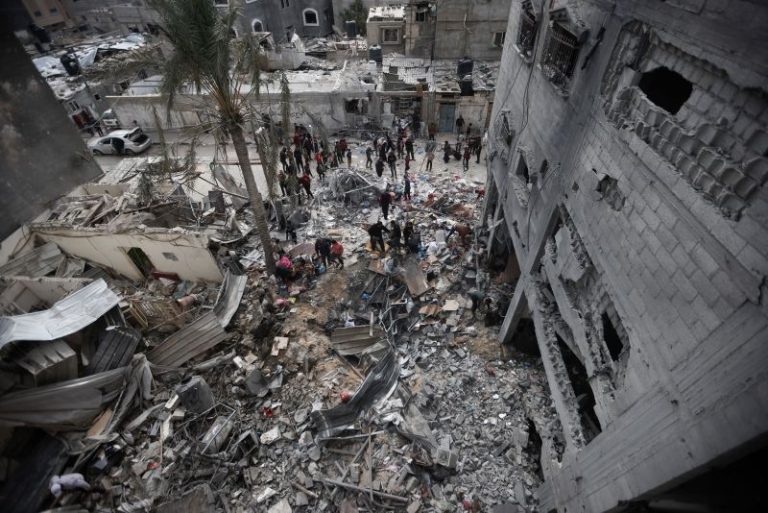People starving and dead bodies left in the streets: This is the dire picture of conditions in northern Gaza painted by a top UN official in charge of relief operations in the enclave.
“Colleagues who have managed to make it to the north in recent days describe scenes of utter horror: Corpses left lying in the road. People with evident signs of starvation stopping trucks in search of anything they can get to survive,” Martin Griffiths, UN Under-Secretary-General for Humanitarian Affairs and Emergency Relief Coordinator, told members of the UN Security Council on Friday.
“Even if people were able to return home, many no longer have homes to go to,” he said, adding shelters are already housing far more people than they can cope with.
The risk of famine grows by the day as food and water is running out, he said, while the health system is “in a state of collapse.”
Women are unable to give birth safely and children cannot get vaccinated, with cases of infectious diseases on the rise and people seeking shelter in hospital yards, he said.
Aid has been trickling into Gaza slowly from two border crossings in the south.
On Thursday, the United Nations Office for the Coordination of Humanitarian Affairs said Israel had denied critical supplies from entering northern Gaza. But Israel has accused the UN’s Palestinian refugee agency of not doing enough and “stalling” the progress.
In a stinging criticism, Griffiths said his team’s efforts to send humanitarian convoys to the north “have been met with delays, denials, and the imposition of impossible conditions,” while “the lack of respect for the humanitarian notification system puts every movement of aid workers in danger.”
Efforts to provide humanitarian assistance to other parts of the enclave have also been badly impacted. “Our access to Khan Younis and the middle area is largely absent,” he said.
The UN official also laid into Israel’s policy of telling people to leave their homes ahead of increased military operations.
“Orders for evacuation are unrelenting. As ground operations move southwards, aerial bombardments have intensified in areas where civilians were told to relocate for their safety,” Griffiths said, with people being forced to “an ever-smaller sliver of land, only to find yet more violence and deprivation, inadequate shelter and a near absence of the most basic services.”
“There is no safe place in Gaza. Dignified human life is a near impossibility,” he said.
Up to 1.9 million people, representing 85% of the population in Gaza, have been displaced, some multiple times, since the conflict began, according to the United Nations Relief and Works Agency.
But Griffiths also reminded UN Security Council members of Hamas’ attack on Israel.
“While Gaza is the epicenter of this crisis, let us not forget the 1,200 people killed, thousands injured, and hundreds taken in the brutal attack by Hamas and other armed groups on Israel on October 7, and the accounts of abhorrent sexual violence,” he said.
Rocket fire continues to pound populated areas of Israel, “causing more civilian casualties and trauma,” he said.
“What we have seen since October 7 is a stain on our collective conscience. Unless we act, it will become an indelible mark on our humanity,” Griffiths said.

